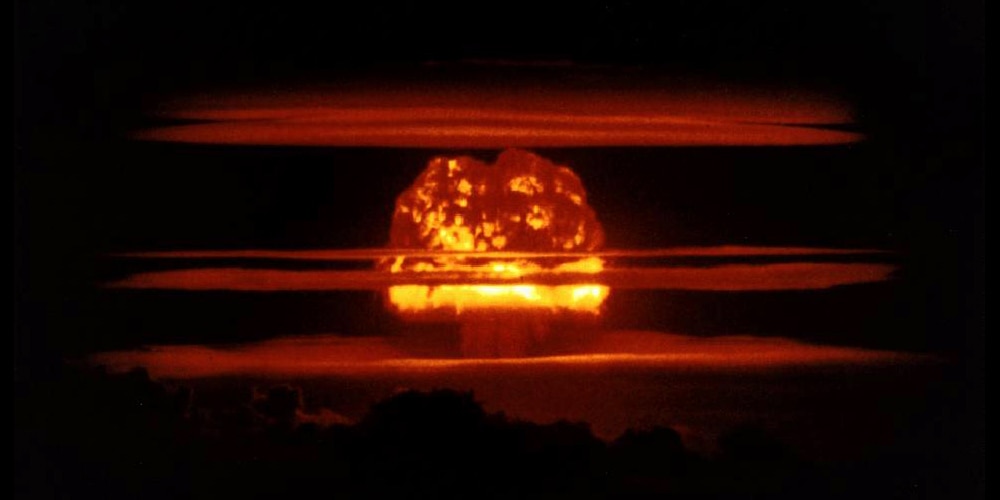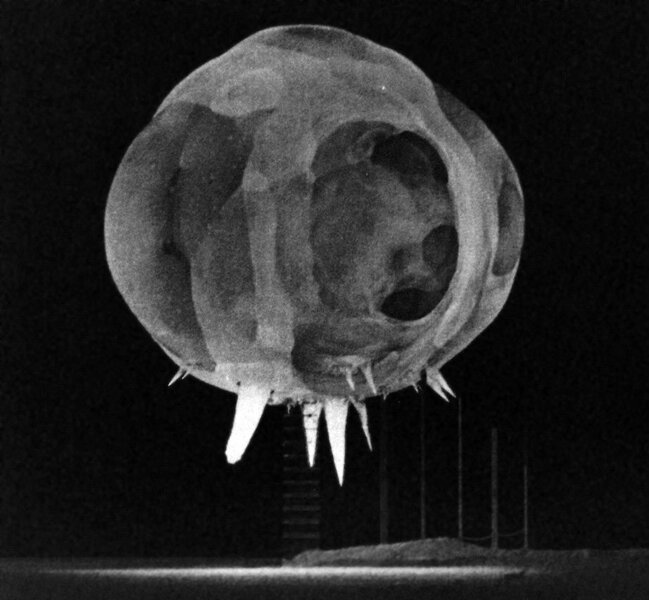Create a free profile to get unlimited access to exclusive videos, sweepstakes, and more!
Declassified nuclear weapon test footage is scientifically fascinating and existentially terrifying

On YouTube, a large collection of videos showing nuclear weapon detonation tests has been released. I’ve watched quite a few, and my feelings about them are … interesting. Decidedly mixed, to say the least.
Here is a "small" test from 1957, the Diablo explosion:
I have always been fascinated by big explosions. When I was a kid, naïve and living in a bubble, it was the “cool” factor. As I got older and could appreciate just what these big bangs could do to buildings, cities, people … that fascination became more like that of a rabbit staring down a snake -- compelled and repulsed, both simultaneously.
I wonder if that’s why people like horror and disaster movies so much. I know I do. But it requires knowing just how much to suspend disbelief. I love the feeling of anticipation, the fear I can experience ... knowing it’s not real. But when I know it is real, and a real threat, things change.
The dichotomy here is strong. With that in mind, let’s talk nuclear weapon detonations.
In the 1940s through the '60s, the United States detonated hundreds of nuclear devices. These tests were performed to investigate the design, explosive yield, effectiveness and aftereffects of the bombs. The tests were filmed from multiple angles and are a valuable scientific resource— whether you think we should be building these weapons or not, many countries have them, some more stable than others. We need to make sure we have every resource we can maintain on what these terrible weapons can do.
Scientists at the Lawrence Livermore National Laboratory are scanning these old films, because age is taking its toll, and the recordings are decomposing. Some 10,000 films were taken of the tests. LLNL has recovered 6500 of them, scanned over 4000, and 750 of this lot have been declassified. These are the ones being put on YouTube, and you can watch them, one after another, for yourself.
I watched quite a few, and that frisson of dread, that cold prickly feeling spreading around the base of my spine, was a familiar one. But at the same time, I couldn’t help analyzing what I was seeing scientifically.
When a nuclear bomb explodes, the sudden input of energy into its surroundings is vast. At first, the weapons (called atomic or A-bombs) used fission, the splitting of nuclei of heavy atoms into lighter ones. This releases a lot of energy, far more than conventional (chemical-based) weapons; early fission weapons detonated with a yield equivalent to a few tens of thousands of tons of TNT.
But later, thermonuclear weapons were developed, ones that use a lower yield fission bomb to fuse hydrogen atoms together (which is why these were called hydrogen or H-bombs). Thermonuclear weapons can explode with a yield of tens of millions of tons of TNT.
In my grad school quantum mechanics class, we spent some time doing a problem showing how the huge atomic forces holding nuclei together and keeping separate nuclei apart could be overcome to create fission and fusion. Only a handful of relatively simple assumptions needed to be made, and the math was surprisingly straightforward. Yet it leads to such fearsome energy released: enough to power a star, or a weapon.
When you detonate such a device on Earth, you get the iconic mushroom cloud. Why? It’s because the explosion dumps a vast amount of energy into the surrounding air, heating it up. Hot gas rises — this is called convection — and so you get that huge glowing ball of rising air, forming the mushroom cap. Cooler air from around it flows inward along the ground to fill the partial vacuum left behind beneath the rising air, and that forms the stalk.
The films of the tests reveal more. Taken at high speed, they show what happens milliseconds after detonation. A spherical fireball is created, caused by air absorbing the high-energy radiation (X-rays and gamma rays, depending on the bomb) from the blast. There’s also a huge shock wave, created as the blast compresses the material around it. This expands at the speed of sound, passing the fireball in size and continuing onward.
When I was a kid, I saw a photo of one test, part of a series of tests called Operation Tumbler-Snapper, relatively low-yield (up to a few dozen kilotons) done in the early 1950s. When I first saw it, I couldn’t understand it; the cloud was mottled, and had spikes coming out of it. The book I saw it in didn’t mention scale, or explain what I was seeing.
But now I understand; the sphere in the photo was the fireball, perhaps 20 meters across. The mottling was due to the vaporized bomb casing expanding faster than the shock wave and slamming into it; asymmetries in the casing translate into different densities of the expanding material.
And those spikes? They’re called “rope tricks.” The bomb was mounted at the top of the tower (which you can see under the fireball), braced using metal cables. The spikes are those cables vaporizing due to the heat of the explosion.
There is a lot more science to explore here; the impact of underwater or subsurface blasts, the electromagnetic pulse that can wipe out electronics from hundreds of kilometers away, the ground effects due to the shock wave.
When I was a kid, I would’ve thought all this was cool. Now? I feel more ghostly fingers brushing against the back of my neck.
Back in the '80s, hardly a day went by when we weren’t reminded that the US and the USSR had thousands of nukes sitting on missiles aimed at each other. That fear dimmed somewhat with time and treaties, but now, here we are once again, and some nations’ leaders — including our own — naively and foolishly let the idea of unleashing that hellfire roll around in their minds. Perhaps this threat will always be with us in one form or another. We humans do seem to have a predilection for letting our hatred and petty tribalism outstrip our common sense.
So, when I look at these films, I am conscious of both the science of what I am seeing and the ramifications that freeze my soul. These are not just films of some dusty old experiments, otherwise lost to time. They are instead moments captured showing the release of forces that not only nature itself does on the scale of stellar cores, but which humans decided to unchain in the largest and most impulsively destructive weapons ever detonated on, above, and beneath our planet’s surface. Weapons that still exist, but which still must be never used.
Watch these videos if you so desire, but have a care about what you’re seeing. And when you do, please ask yourself the same question I’ve asked myself, many times:



























